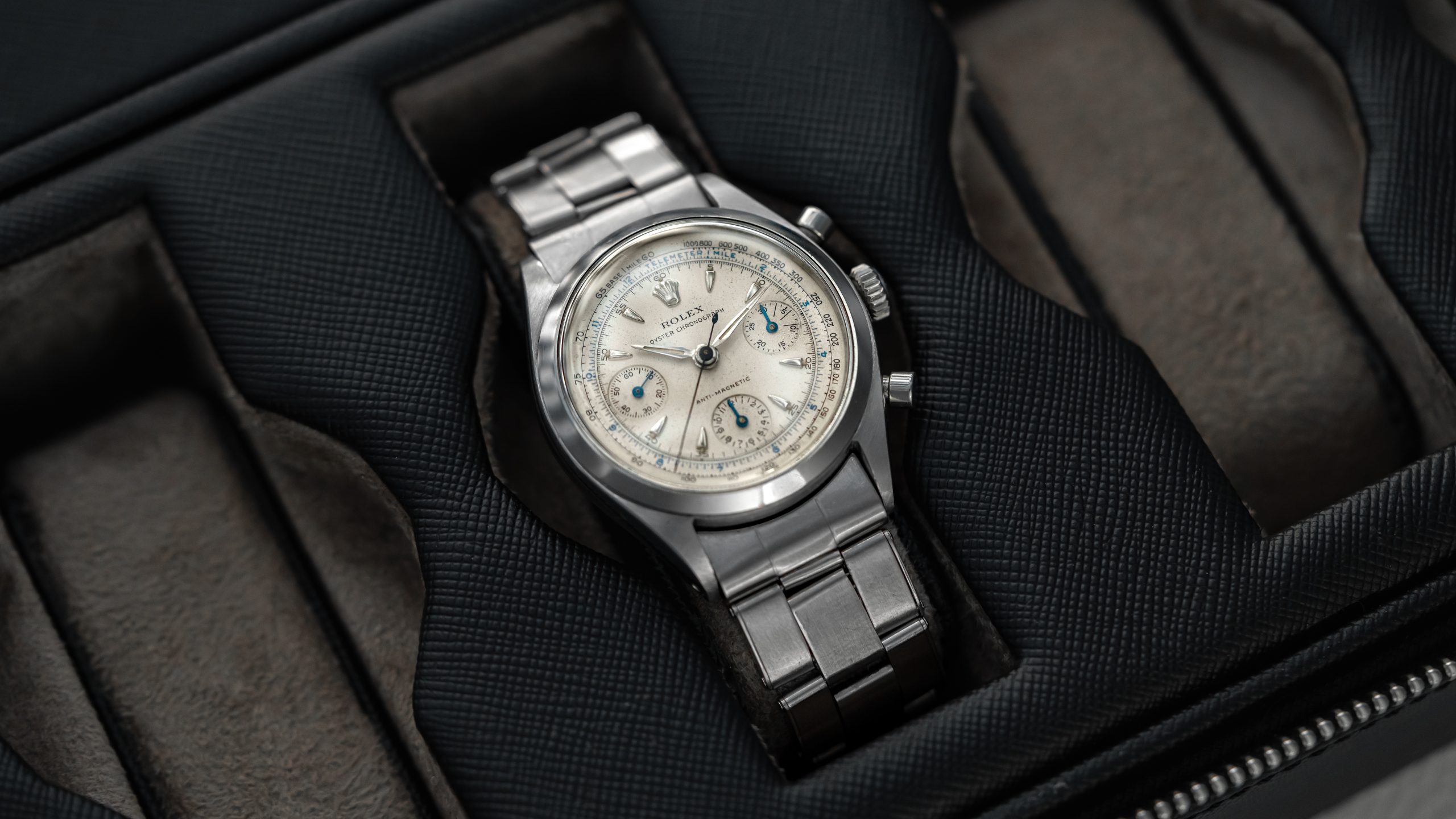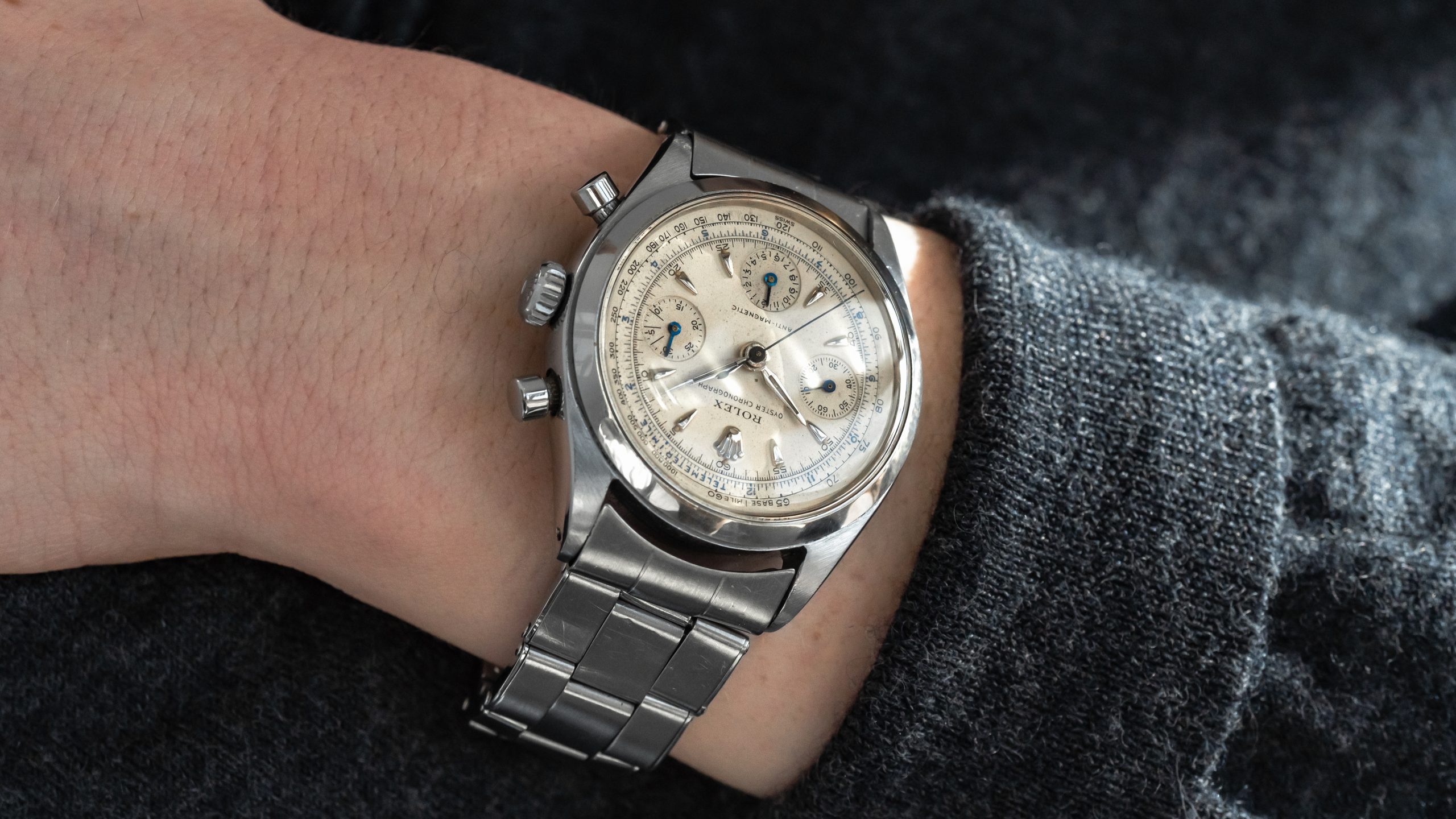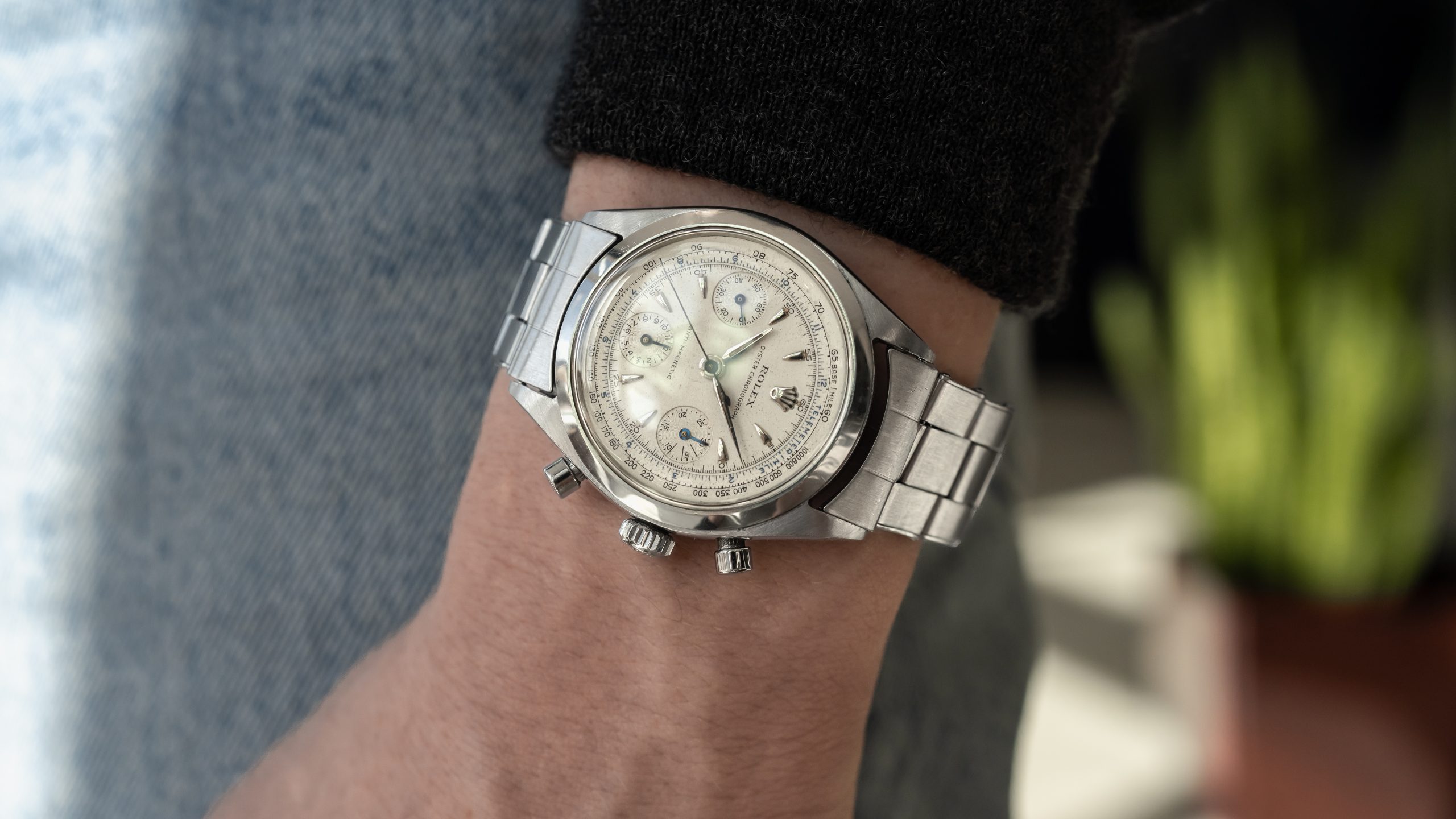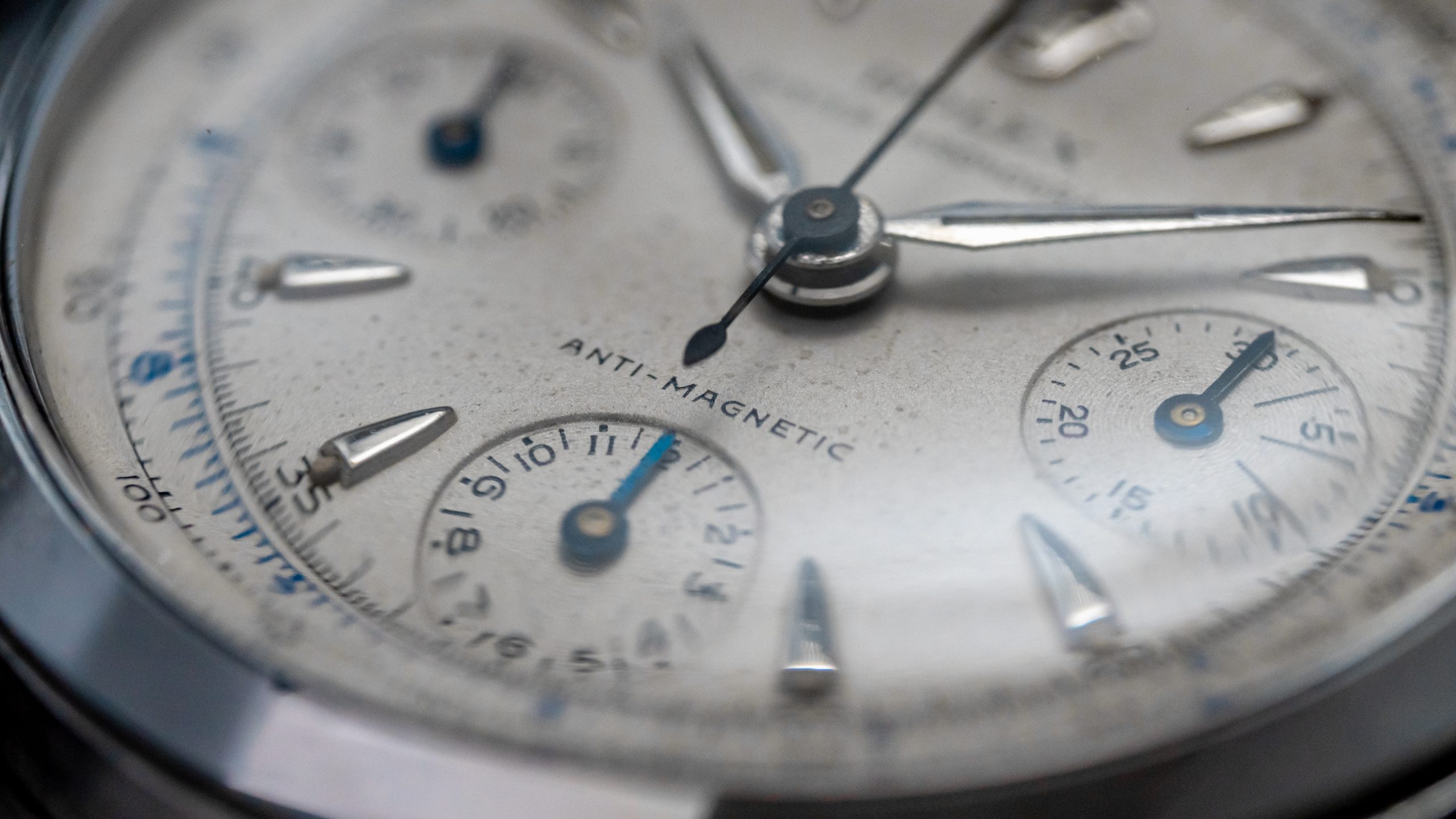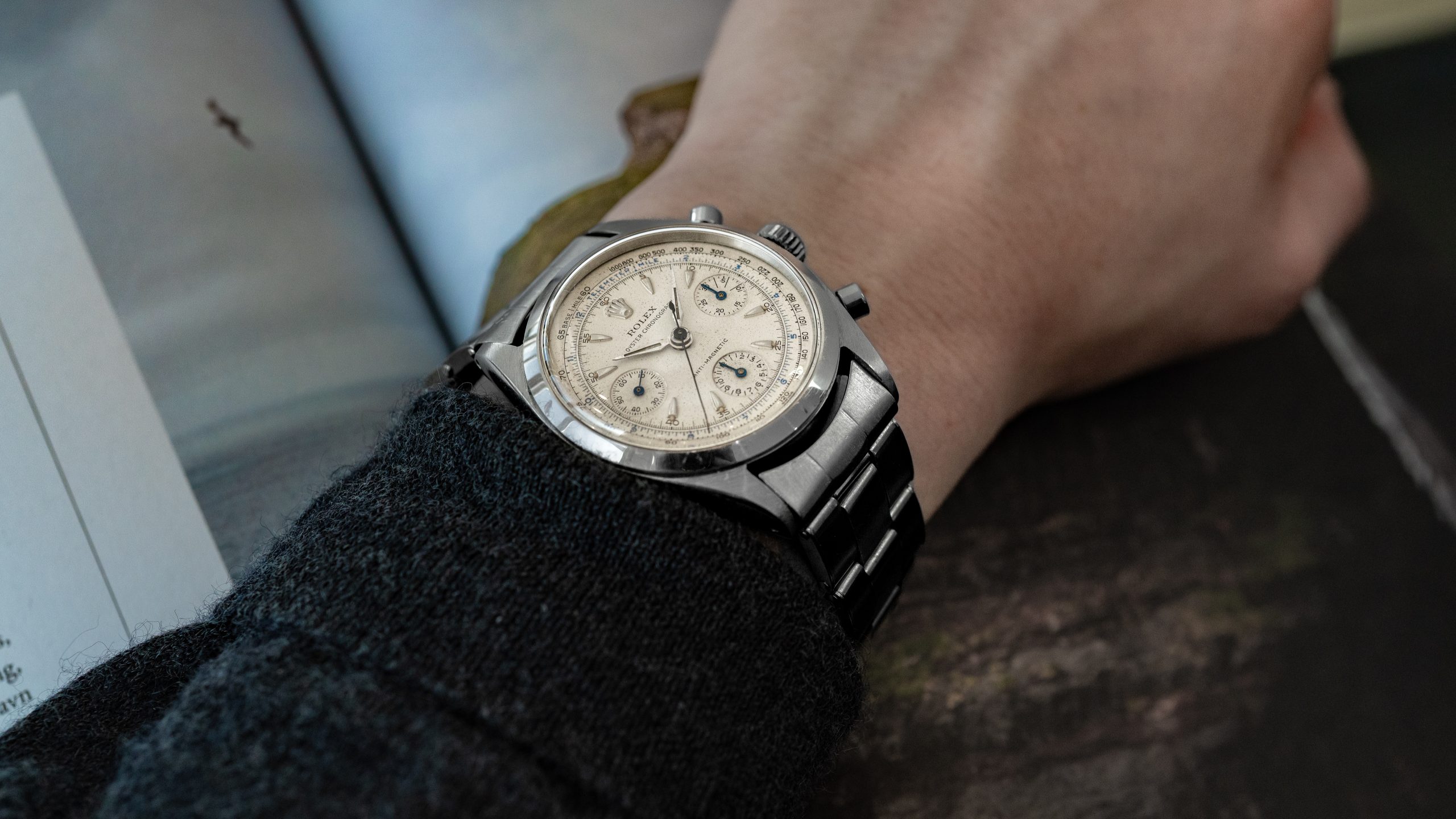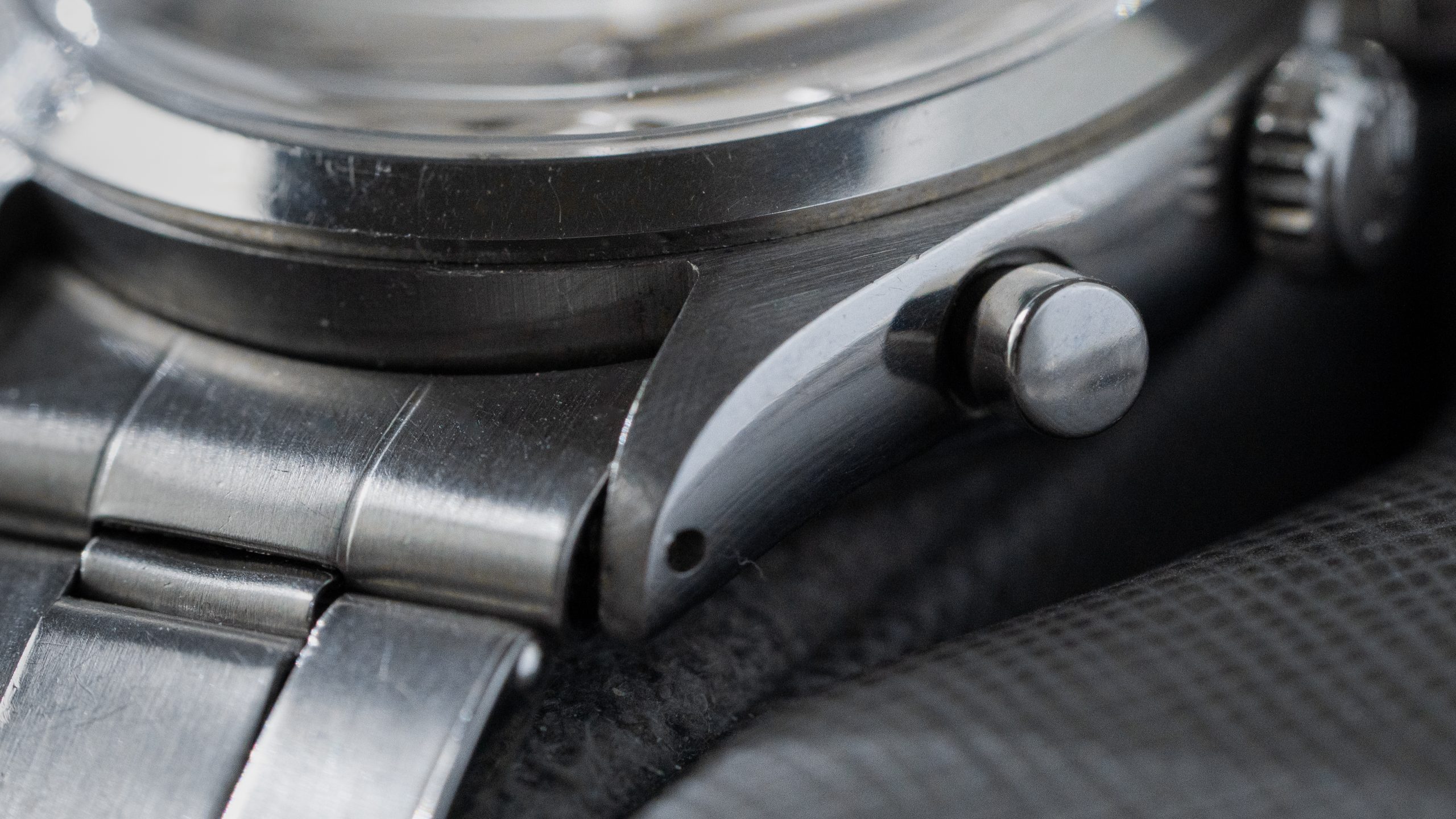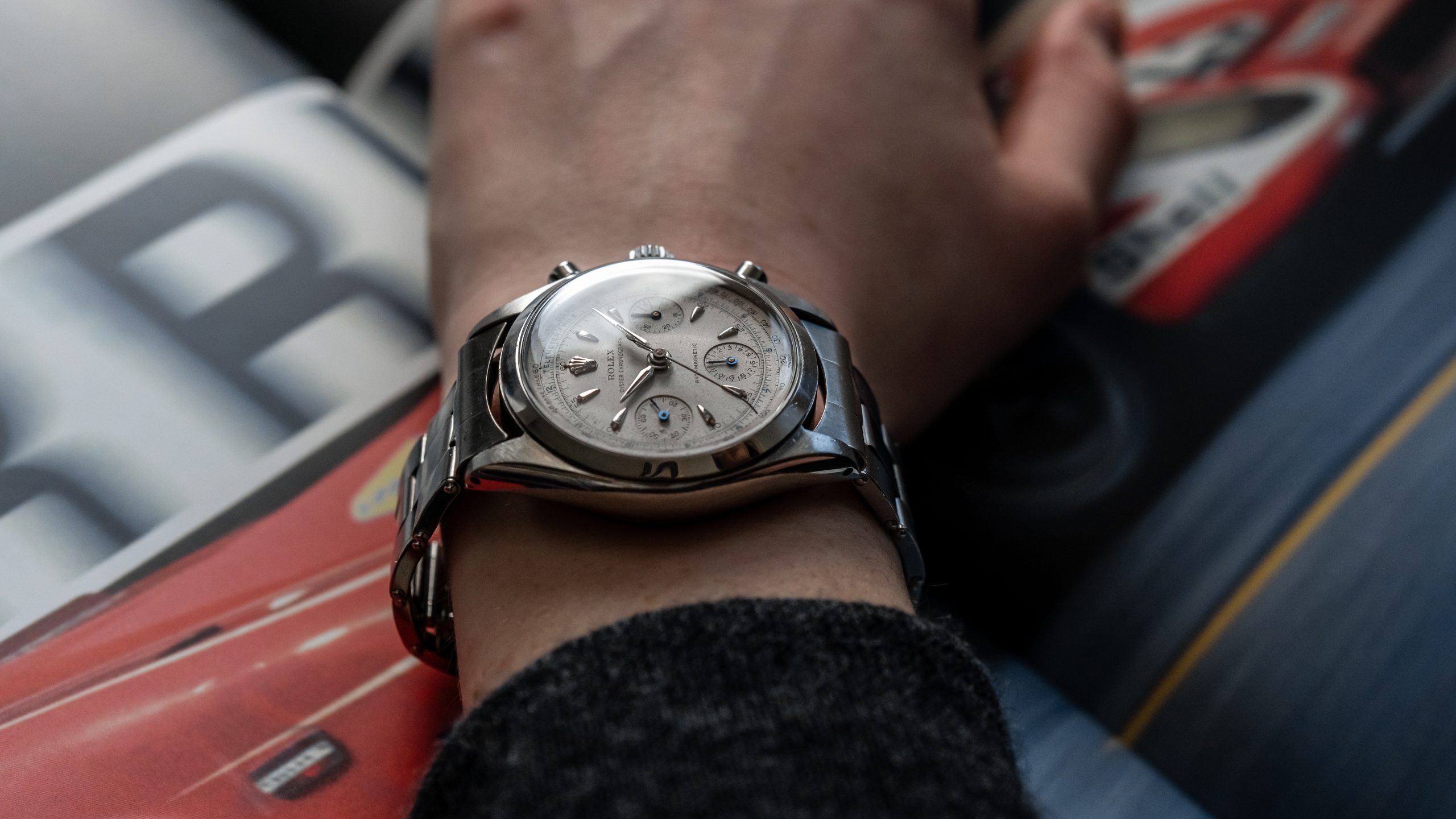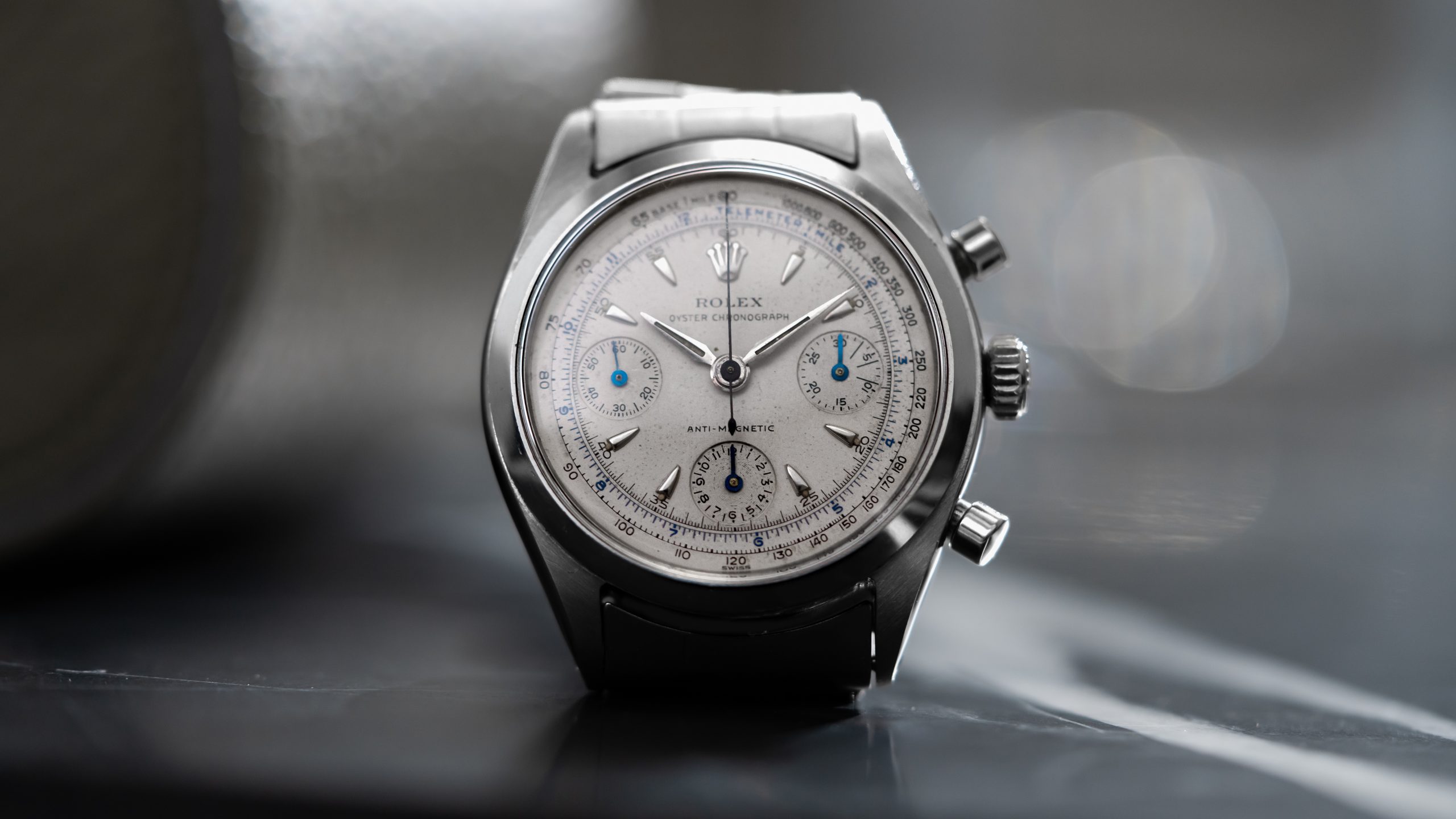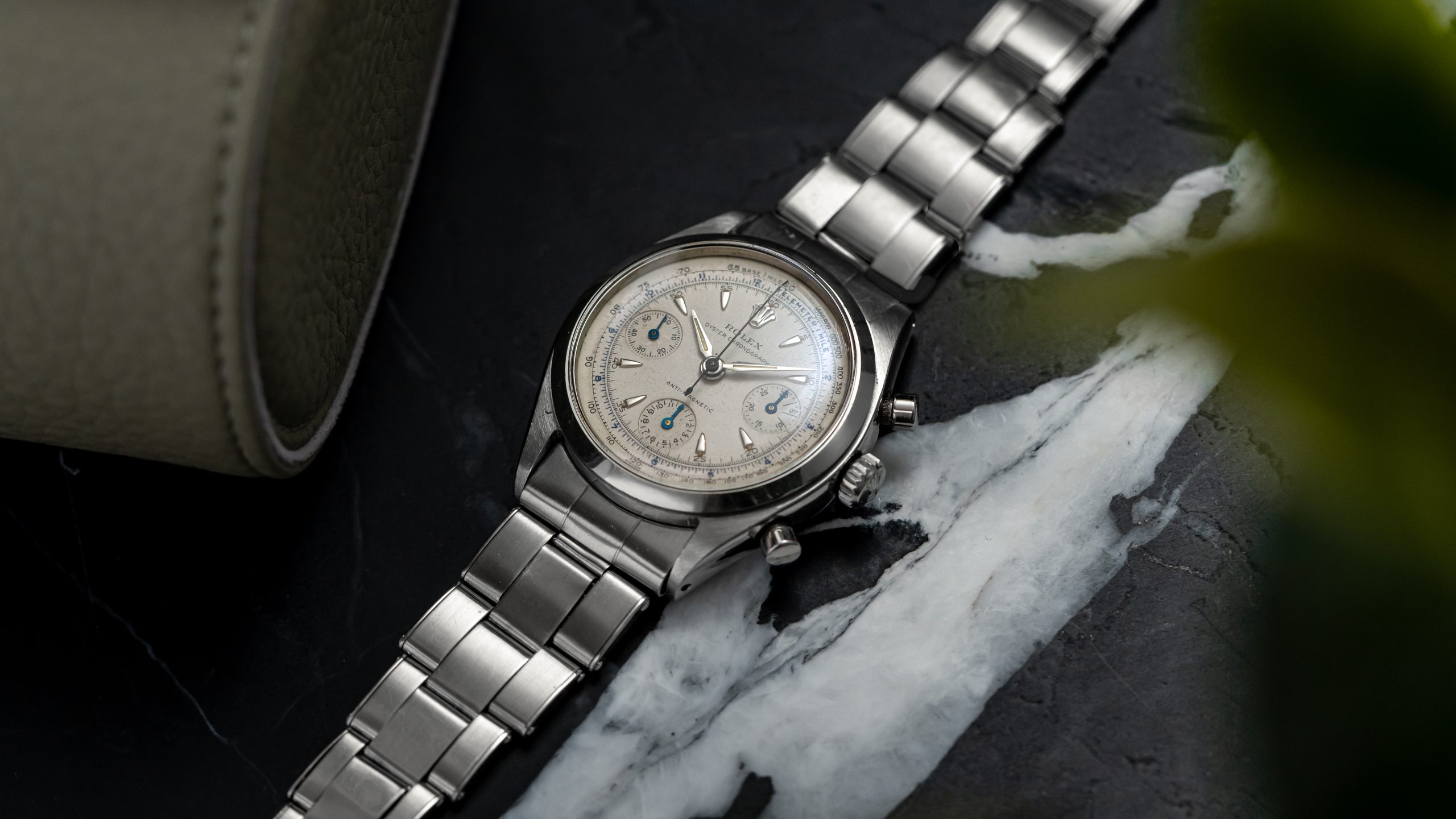The origins of the manual Rolex Daytona are equally if not more interesting than what came after. Pre-Daytona is a classic category that's often, quite unjustly, entirely overlooked. The Rolex chronograph has been a product of constant evolution, from well before the dial read Daytona. This ref. 6234 is from 1961, the very center of Pre-Daytona design. Estimated to have been produced in 2300 examples in steel, it's 36mm with a steel bezel and no frills.
The dial here, signed SWISS only, is made to be legible and made to be useful. There are two configurations of 6234 dials, one with large subdials and one, like this, with undersized subdials. Most think these latter undersized subdials, which are less common, were made so that the subdial edges did not intersect with outer scales in an attempt to improve legibility. There is an extra detail to note here as well from the very tail end of production. The vast majority of 6234 chronographs featured subdial hands which matched the case metal. The very end of steel production included these heat-blued, steel subdial hands, quite uncommon, and this example sports them.
This 6234 shares the familiar Daytona heartbeat of a Valjoux 72, or 72B here, to be precise. The case is familiar in design, with a screwdown Oyster crown and pump pushers, but a sterile steel bezel. The standout difference to how this wears lies in simple proportions, at 36mm. That size truly does lend an elegance that hasn't been replicated since.
Nearly all Pre-Daytona references were produced for relatively short timelines, here from 1955 until 1961, compared to modern Rolex. They represent times of shifting preferences and quick thinking to match, as the golden era of sports watches was coming into view. The constant iteration here is the foundation the Daytona is built on, sporting but classic as a result of when it was made. Pre-Daytona is really a bit of misnomer, although that's what everyone calls them. This is a Rolex era which should not be defined by what came after, there's ample substance to consider on its own merits. Even if underserved today, Pre-Daytona holds a wealth of merit wrapped in more classic proportion, no less beautiful with considerably fewer people paying attention. To quote Aurel Bacs, 'About one billion people know what the Daytona is, but only a small fraction knows anything about the Pre-Daytona. It just hasn’t broken into the mainstream yet.'

